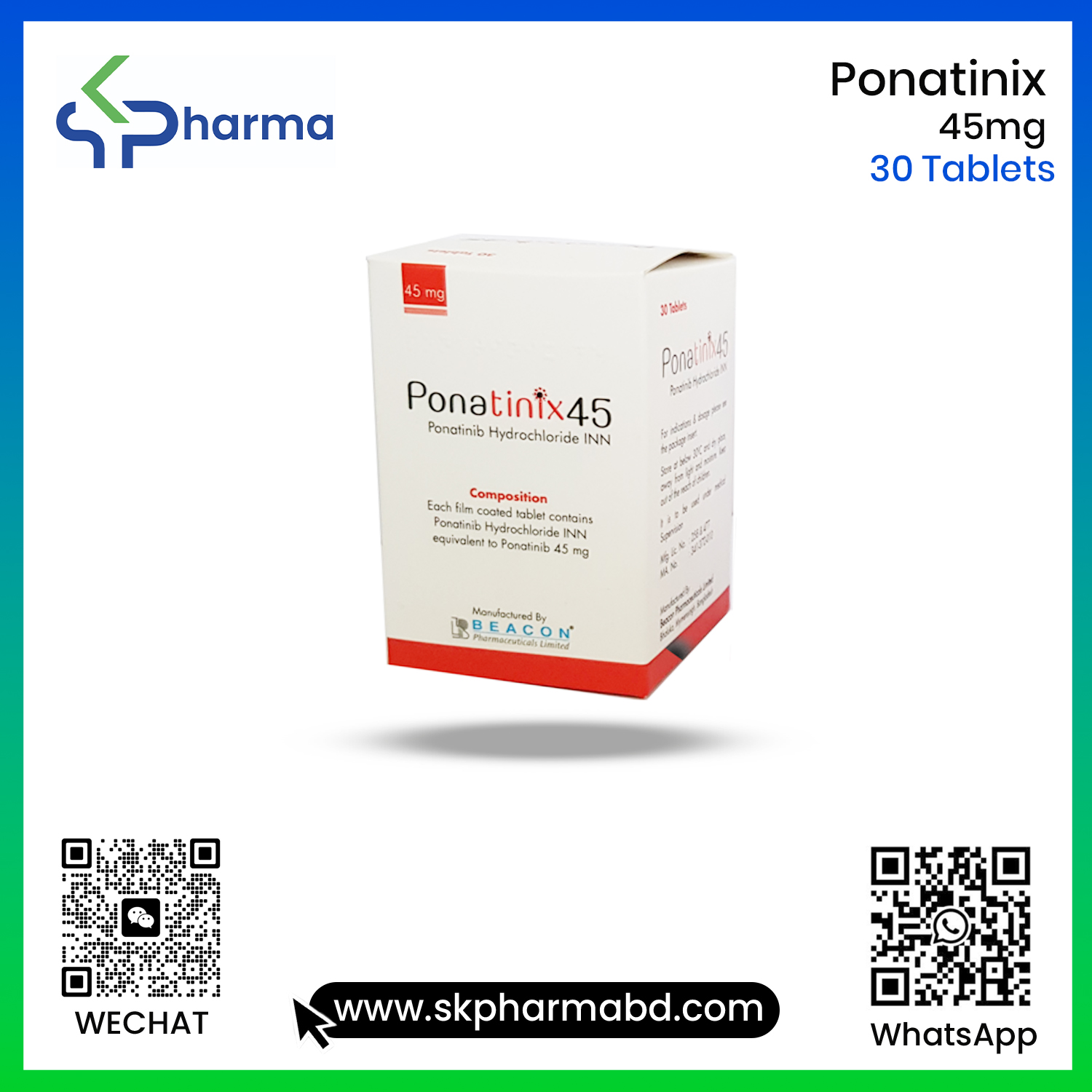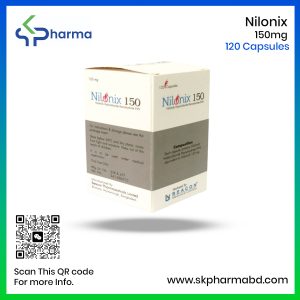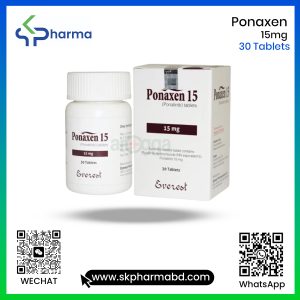Related products
Product Description
Ponatinib is a kinase inhibitor indicated for the: Treatment of adult patients with chronic phase, accelerated phase, or blast phase chronic myeloid leukemia (CML) or Ph+ ALL for whom no other tyrosine kinase inhibitor (TKI) therapy is indicated. Treatment of adult patients with T315I-positive CML (chronic phase, accelerated phase, or blast phase) or T315I-positive Philadelphia chromosome positive acute lymphoblastic leukemia (Ph+ ALL).
Theropeutic Class
Tyrosine Kinase Inhibitor
Pharmacology
Ponatinib is a kinase inhibitor. Ponatinib inhibited the in vitro tyrosine kinase activity of ABL and T315I mutant ABL with IC 50 concentrations of 0.4 nM and 2.0 nM, respectively. Ponatinib inhibited the in vitro activity of additional kinases with IC 50 concentrations between 0.1 nM and 20 nM, including members of the VEGFR, PDGFR, FGFR, EPH receptors and SRC families of kinases, and KIT, RET, TIE2, and FLT3. Ponatinib inhibited the in vitro viability of cells expressing native or mutant BCR-ABL, including T315I. In mice, treatment with ponatinib reduced the size of tumors expressing native or T315I mutant BCR-ABL when compared to controls.
Dosage & Administration of Ponatinix 45 mg
Recommended dose: 45 mg taken orally once daily with or without foodHepatic Impairment: 30 mg orally once daily. Modify or interrupt dosing for hematologic and non-hematologic toxicity
Dosage of Ponatinix 45 mg
Recommended dose: 45 mg taken orally once daily with or without foodHepatic Impairment: 30 mg orally once daily. Modify or interrupt dosing for hematologic and non-hematologic toxicity
Contraindications
None
Side Effects of Ponatinix 45 mg
The most common non-hematologic adverse reactions (≥20%) were, abdominal pain, rash, constipation, headache, dry skin, arterial occlusion, fatigue, hypertension, pyrexia, arthralgia, nausea, diarrhea, lipase increased, vomiting, myalgia and pain in extremity.
Pregnancy & Lactation
Based on its mechanism of action and findings in animals, Ponatinib can cause fetal harm when administered to a pregnant woman. There are no available data on Ponatinib use in pregnant women. In animal reproduction studies, oral administration of ponatinib to pregnant rats during organogenesis caused adverse developmental effects at doses lower than human exposures at the recommended human dose. Advise pregnant women of the potential risk to a fetus. There is no data on the presence of ponatinib in human milk, the effects on the breastfed infant or on milk production.
Storage Conditions
Store Ponatinib at room temperature between 20° C to 25° C
Use In Special Populations
Pediatric Use: Safety and effectiveness have not been established in pediatric patients.
Drug Classes
Tyrosine Kinase Inhibitor
Mode Of Action
Ponatinib is a kinase inhibitor. Ponatinib inhibited the in vitro tyrosine kinase activity of ABL and T315I mutant ABL with IC 50 concentrations of 0.4 nM and 2.0 nM, respectively. Ponatinib inhibited the in vitro activity of additional kinases with IC 50 concentrations between 0.1 nM and 20 nM, including members of the VEGFR, PDGFR, FGFR, EPH receptors and SRC families of kinases, and KIT, RET, TIE2, and FLT3. Ponatinib inhibited the in vitro viability of cells expressing native or mutant BCR-ABL, including T315I. In mice, treatment with ponatinib reduced the size of tumors expressing native or T315I mutant BCR-ABL when compared to controls.
Pregnancy
Based on its mechanism of action and findings in animals, Ponatinib can cause fetal harm when administered to a pregnant woman. There are no available data on Ponatinib use in pregnant women. In animal reproduction studies, oral administration of ponatinib to pregnant rats during organogenesis caused adverse developmental effects at doses lower than human exposures at the recommended human dose. Advise pregnant women of the potential risk to a fetus. There is no data on the presence of ponatinib in human milk, the effects on the breastfed infant or on milk production.
Pediatric Uses
Pediatric Use: Safety and effectiveness have not been established in pediatric patients.





